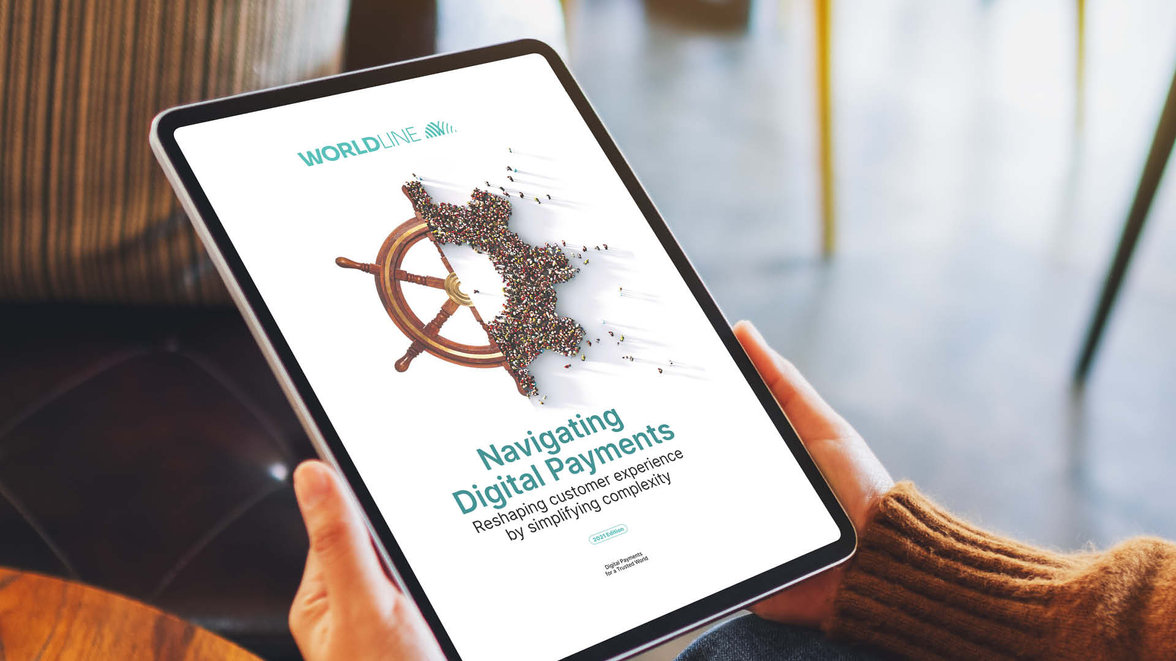Learn how to reshape customer experience by simplifying complexity.
Download the Navigating Digital Payments report to explore the twelve key payments trends that every business must be prepared for to stay successful.
03 / 10 / 2021
Our Navigating Digital Payments 2021 report explores the key trends that will drive innovation in payments. As we head towards a greener future, the key to success lies in reshaping customer experiences to make them more convenient, safe and secure by simplifying the behind-the-scenes complexity.

In this report, we share our vision of how payments will look in 2030. We explain the ongoing duality between increasing complexity of the payment landscape and consumer expectations for simple and seamless payment experiences.
Businesses everywhere will need to bridge this gap. Doing so will require great skill, ingenuity, innovation and technical know-how. These trends will bring a changed world. Orders will be placed and paid for autonomously. New business models, digital currencies and traceability solutions will enable greener solutions. And the fight against fraud and counterfeit goods will enter new realms. These changes will be powered by AI-based hyperautomation and data-sharing, which will be enabled through privacy-preserving technologies to ensure security and trust.
This report explores the key topics where significant changes are expected in the medium term and where Worldline believes businesses need to start their preparations now. As the European leader in the field, understanding the complex payment landscape is Worldline’s day to day business and we continually find innovative ways to help our clients deliver the best possible experience to their customers.
Learn how to reshape customer experience by simplifying complexity.
Download the Navigating Digital Payments report to explore the twelve key payments trends that every business must be prepared for to stay successful.
Get monthly insights on the latest payments trends and innovations from our Navigating Digital Payments newsletter.
Subscribe Opens in a new tab